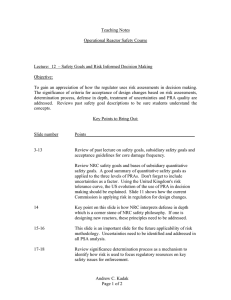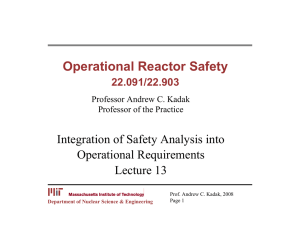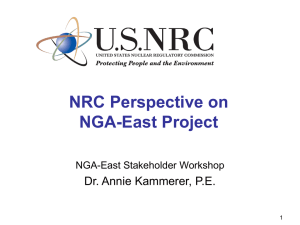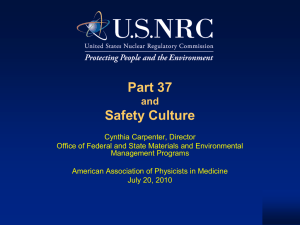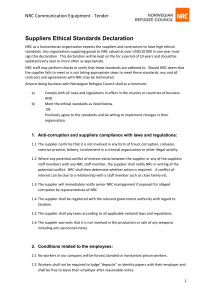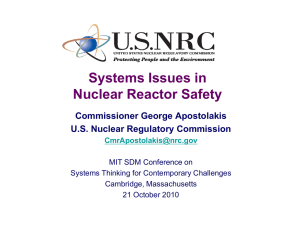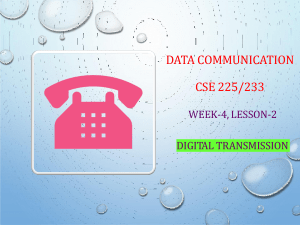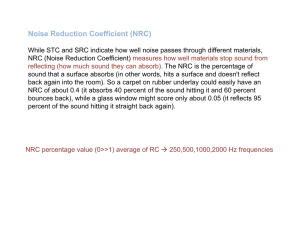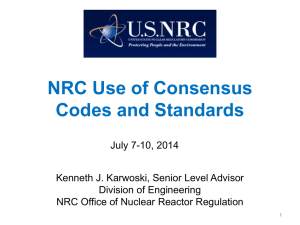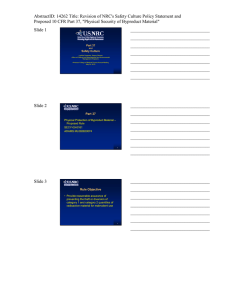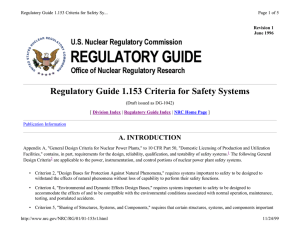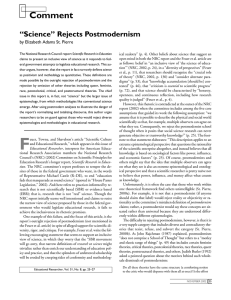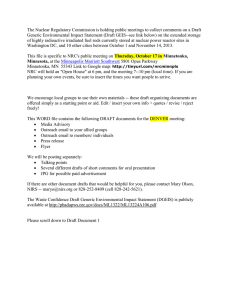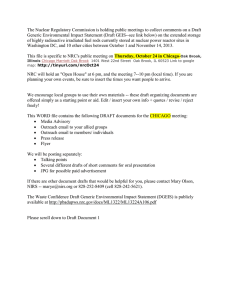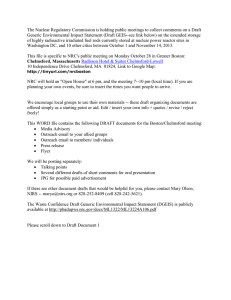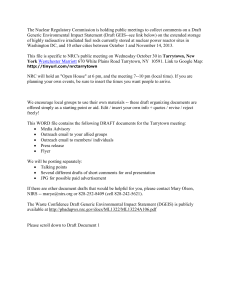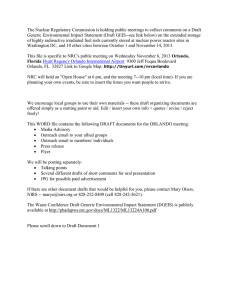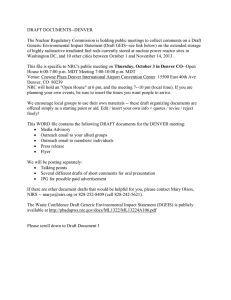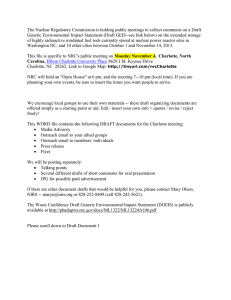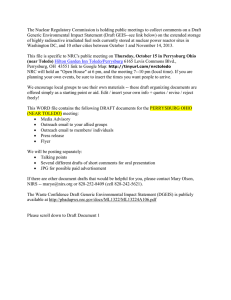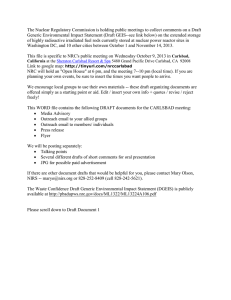Teaching Notes Operational Reactor Safety Course
advertisement
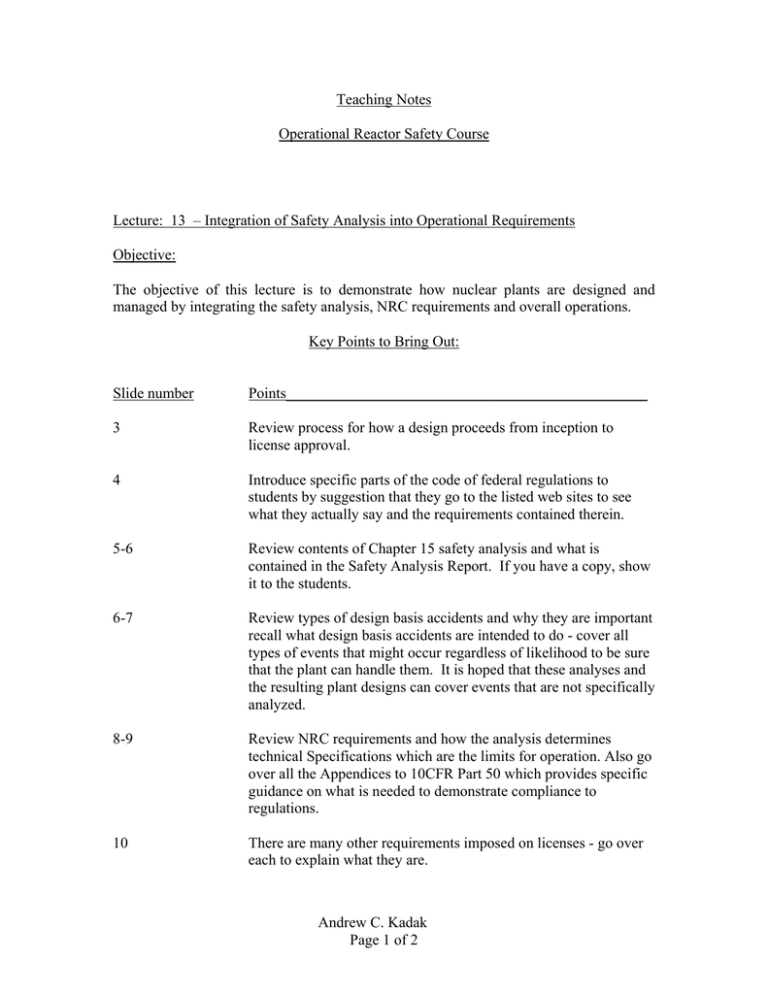
Teaching Notes Operational Reactor Safety Course Lecture: 13 – Integration of Safety Analysis into Operational Requirements Objective: The objective of this lecture is to demonstrate how nuclear plants are designed and managed by integrating the safety analysis, NRC requirements and overall operations. Key Points to Bring Out: Slide number Points________________________________________________ 3 Review process for how a design proceeds from inception to license approval. 4 Introduce specific parts of the code of federal regulations to students by suggestion that they go to the listed web sites to see what they actually say and the requirements contained therein. 5-6 Review contents of Chapter 15 safety analysis and what is contained in the Safety Analysis Report. If you have a copy, show it to the students. 6-7 Review types of design basis accidents and why they are important recall what design basis accidents are intended to do - cover all types of events that might occur regardless of likelihood to be sure that the plant can handle them. It is hoped that these analyses and the resulting plant designs can cover events that are not specifically analyzed. 8-9 Review NRC requirements and how the analysis determines technical Specifications which are the limits for operation. Also go over all the Appendices to 10CFR Part 50 which provides specific guidance on what is needed to demonstrate compliance to regulations. 10 There are many other requirements imposed on licenses - go over each to explain what they are. Andrew C. Kadak Page 1 of 2 11 Clarify the distinction between licensing basis (a collection of all NRC requirements imposed on the licensee) from the design basis which is largely related to the basic design of the plant. 12-15 This series of slides describes the NRC oversight process and how the regulations are enforced and reactors monitored. Take the students to the NRC website to show what information is available to the public regarding the Reactor Oversight Process by checking the status of local reactors. 16 The purpose of this slide is to make clear that blind compliance to rules is not a good safety strategy but a balance of skills, rules and knowledge is important - refer to Three Mile Island as an example where simply complying to rules is not sufficient. 17-21 These slides focus on how utilities manage safety by keeping the plant within a "safety envelope". Emphasize critical safety functions and don't forget the goal of electricity generation. Operations are very tightly procedure based with the control room the hub of all operations and control through which all activities on the reactor plant are managed and controlled. Review the role of the risk monitor again as a refresher to maintain a safety focus. 22-23 Review a typical plant organization chart which describes how the plant organizes itself to assure compliance and safe operations. Stress the roles of quality assurance, operations and radiation protection . Review a typical non-outage day in terms of what they actually do. 24 The plant has numerous internal checks to monitor how it is doing without NRC oversight. It is in the best interest of the plant to avoid issues. The items listed are utility and industry programs aimed at identifying problems and correcting them before they become real problems. Focus on the importance of corrective action programs and various review board to be sure that internal blindness does not occur. 25 These key success factors were developed by engineers experienced in design and operations. They are ranked by priority - note the top key to success is safety culture. Andrew C. Kadak Page 2 of 2 MIT OpenCourseWare http://ocw.mit.edu 22.091 / 22.903 Nuclear Reactor Safety Spring 2008 For information about citing these materials or our Terms of Use, visit: http://ocw.mit.edu/terms.
